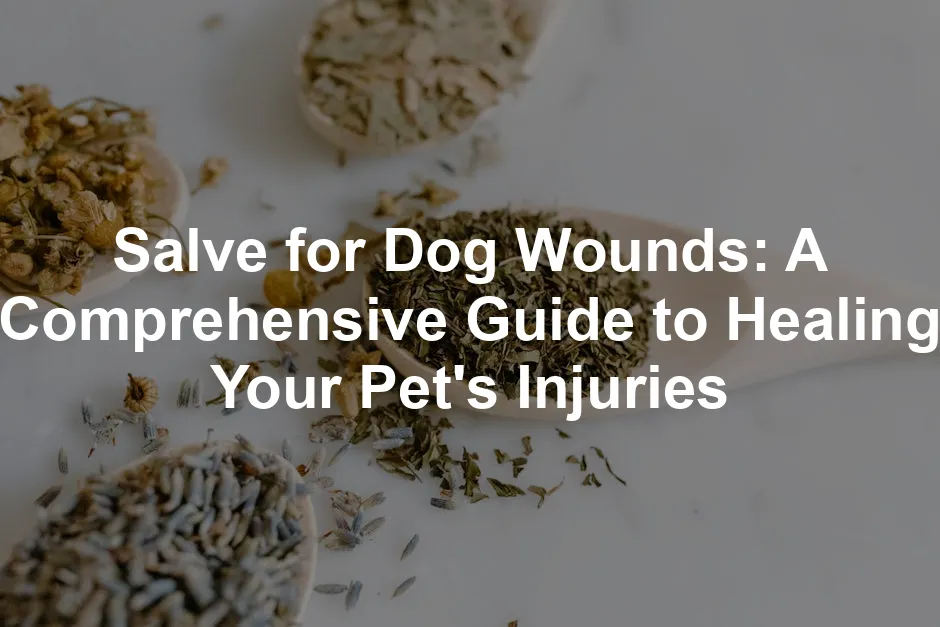Introduction
Wound care is essential for your dog’s health. Just like humans, dogs can suffer from cuts, scrapes, and burns. Proper treatment is crucial to ensure healing and prevent infections. Salves and ointments offer effective solutions for treating these injuries. This article will help you understand how to choose the right salve for your dog’s wounds.
Summary and Overview
Dog wounds refer to any injury affecting a dog’s skin. Common types include scrapes, cuts, burns, and bites. Salves play a vital role in wound healing. They help protect the area, prevent infections, and promote faster recovery. For severe wounds, always consult a veterinarian. Many salves are available, each designed to address specific types of injuries.
Understanding Dog Wounds
What Are Dog Wounds?
Dog wounds are injuries that damage the skin and underlying tissues. They can be classified into several categories:
- Lacerations: Deep cuts caused by sharp objects.
- Abrasions: Scrapes that affect only the top layer of skin.
- Punctures: Wounds created by sharp objects penetrating the skin.
Different wounds require different treatments. For example, lacerations may need stitches, while abrasions can often be treated with topical care. Understanding the type of wound helps you choose the right approach for healing.
Signs Your Dog Has a Wound
Recognizing a wound on your dog can be straightforward. Watch for these common symptoms:
- Licking: Dogs often lick their wounds, indicating irritation.
- Limping: If your dog is limping, it may be due to an injury on their paws or legs.
- Swelling: Look for any swollen areas on their body.
Evaluating the severity of the wound is crucial. Minor wounds can often be treated at home, but severe injuries should prompt a visit to the vet.
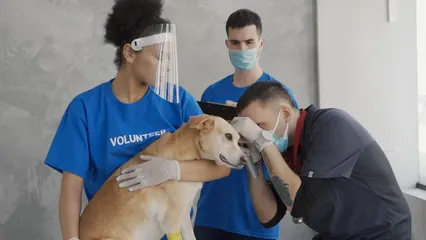
Types of Salves for Dog Wounds
Over-the-Counter Salves
When your dog has a wound, you might consider over-the-counter (OTC) salves. These are readily available and designed for quick relief. Popular options include Sulfodene and Silver Honey.
Sulfodene offers pain relief and infection prevention. It’s effective for cuts, scrapes, and bites. Many dog owners appreciate its affordability and ease of use. If you’re looking for a fast solution, you can find it here: Sulfodene Dog Wound Care Ointment.
Silver Honey is another excellent choice. This product uses Manuka honey and MicroSilver, both known for their healing properties. It helps with hot spots, abrasions, and rashes, making it versatile for various wounds. You can check it out here: Silver Honey Healing Ointment.
Both options provide a protective barrier, aiding in faster recovery while keeping the area clean. Always read the instructions carefully to ensure safe application.
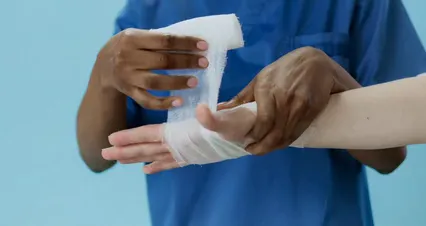
Natural Remedies
Natural remedies can be a gentle alternative for treating dog wounds. Ingredients like Manuka honey and calendula are known for their healing properties. Manuka honey is particularly effective due to its antibacterial qualities. It helps speed up the healing process while preventing infections. You can find pure Manuka Honey here.
If you enjoy DIY projects, you can create your own salve. A simple recipe might include mixing beeswax with coconut oil and adding a few drops of lavender essential oil. This combination soothes the skin and promotes healing. Grab some high-quality Coconut Oil to get started!
There are also pre-made natural products available. Brands like Sustenance offer canine healing salves with organic ingredients. These products provide a safe option for minor wounds, hot spots, and irritations, ensuring your furry friend heals comfortably. Check out Sustenance Organic Healing Salve for Dogs for a great option.

Prescription Salves
In some cases, your veterinarian may recommend prescription salves. This is especially true for severe wounds or infections. Prescription options often contain stronger antibiotics or anti-inflammatory ingredients.
Common prescription salves include those that target specific conditions, like infected wounds or severe skin issues. If your dog’s wound appears deep or shows signs of infection, it’s crucial to consult your vet. They can provide tailored advice and treatment options to ensure your pet heals properly.
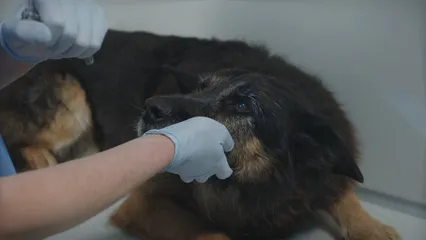
How to Apply Salve Properly
Step-by-Step Application Guide
Applying salve to your dog’s wound can be straightforward. Start by gathering your supplies: salve, gloves, and clean gauze. First, ensure your dog is calm. You might try some gentle petting or give them a favorite toy.
Next, wash your hands and put on gloves. Clean the wound with lukewarm water to remove dirt. Pat it dry gently with a clean cloth. Now, take a small amount of salve and apply it directly to the wound. Use enough to cover the area but avoid excessive amounts.
After applying the salve, prevent licking by using an e-collar or bandage. The PetSafe E-Collar is an excellent tool to keep your pup from getting to their wound. Monitor your dog for a few minutes to ensure they remain calm. If they seem anxious, distract them with a treat or a short walk. Remember, patience and gentle handling make a big difference.

When to Seek Veterinary Assistance
Some signs indicate it’s time to see a vet. If the wound is deep or you notice excessive bleeding, don’t hesitate to get professional help. Other red flags include swelling, pus, or foul odors. These can indicate infections that need immediate attention.
Regular check-ups are essential for healing wounds. Even minor injuries can develop complications if not monitored. A vet can also advise you on the best aftercare practices. Always trust your instincts—if something feels off, it’s better to be safe and consult a professional.

Best Practices for Dog Wound Care
Cleaning the Wound
Cleaning your dog’s wound properly is crucial before applying any salve. Start by rinsing the area with clean, lukewarm water. This helps remove dirt and debris. If there are any stubborn particles, use a soft cloth or gauze to gently wipe them away.
Consider using a pet-safe antiseptic solution for a deeper clean. Products like Betadine or saline solutions are effective and gentle on their skin. You can find Betadine Antiseptic Solution here.
Make sure to dry the wound carefully after cleaning. Pat it dry instead of rubbing, which can cause further irritation. Proper cleaning sets the stage for effective healing and ensures the salve works its best to promote recovery.
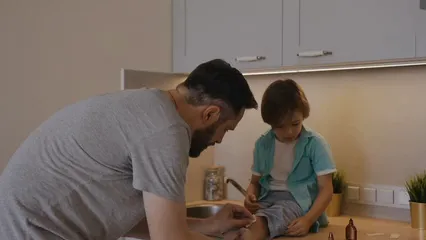
Monitoring the Healing Process
Monitoring your dog’s healing process is crucial. Watch for signs like redness, swelling, or discharge. These could indicate an infection. If you notice any of these symptoms, consult your veterinarian promptly.
Changing dressings regularly is also essential for proper healing. Typically, you should change them at least once a day, especially in the first few days. This helps keep the wound clean and allows you to monitor its condition closely.
Reapply salve each time you change the dressing. This keeps the wound protected and promotes faster healing. Following these steps ensures your dog has the best chance at a smooth recovery.

Preventing Licking and Biting
Preventing your dog from licking or biting at their wound is vital. Licking can introduce bacteria, hindering healing. E-collars, often called “cone collars,” are effective tools for this purpose. They create a barrier, making it difficult for your pet to reach the wound.
Bandaging is another useful strategy. Wrap the wound carefully to keep it protected. Recovery cones and other devices can also help ensure your dog avoids irritating the area. Keeping your dog comfortable is essential while they heal, so choose the best option for your furry friend. You can also consider a Dog First Aid Kit for emergencies!
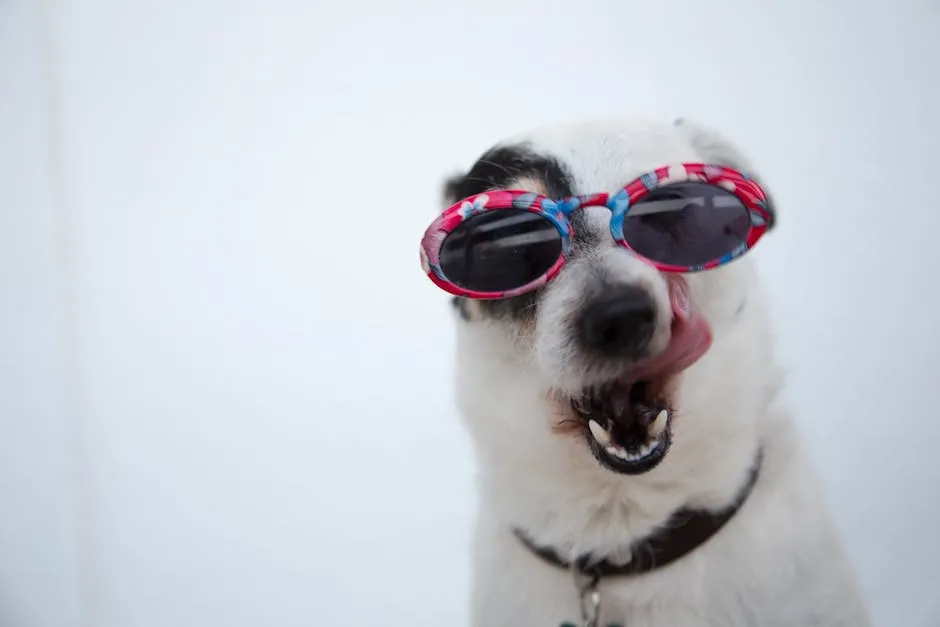
Conclusion
Using salves for dog wounds is essential for proper care. They help in healing and preventing infections. As a pet owner, being proactive and informed is key to your dog’s health. Always consult with a veterinarian for personalized advice and product recommendations. Taking these steps will ensure your pet receives the best care possible.
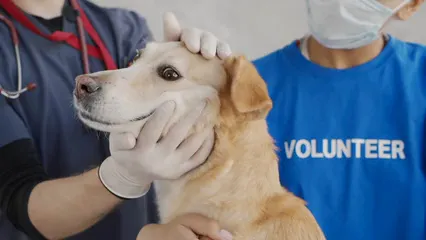
FAQs
Can I use human ointments on my dog?
Using human ointments on dogs can be risky. While some ingredients may be safe, others can be harmful. For example, Neosporin contains neomycin, which may cause allergic reactions in dogs. Always read labels carefully. Before applying any human product, consult your veterinarian. It’s best to use salves specifically designed for pets. These products are formulated for their unique skin needs.
How often should I apply salve to my dog’s wound?
The frequency of applying salve depends on the wound type and severity. For minor cuts and scrapes, reapply salve once or twice daily. If the wound is deeper or infected, follow your vet’s recommendation. Always clean the wound before each application. This practice helps keep the area free from dirt and promotes healing.
What should I do if my dog licks off the salve?
If your dog licks off the salve, try to prevent it from happening again. Use an e-collar or a bandage to protect the area. If licking occurs, reapply the salve after cleaning the wound. Monitor your dog for any signs of irritation. If licking continues, consult your veterinarian for further advice.
Are there any side effects of using salves on dogs?
Salves can sometimes cause side effects, like skin irritation or allergic reactions. Watch for redness, swelling, or excessive itching after application. If any of these occur, stop using the salve immediately and contact your vet. Regular monitoring is key to ensuring your dog’s safety and comfort.
When should I take my dog to the vet for a wound?
Seek veterinary care for serious wounds. Signs that require immediate attention include excessive bleeding, deep cuts, or wounds that won’t stop oozing. If your dog shows signs of infection—such as increased swelling, pus, or fever—visit your vet promptly. Always trust your instincts; if something seems off, it’s better to err on the side of caution.
How can I help my dog’s wound heal faster?
You can promote healing by maintaining a balanced diet rich in vitamins and minerals. Omega fatty acids can also support skin health. Ensure your dog stays hydrated and limit their activity to prevent strain on the wound. Regularly monitor the area and keep it clean. This will help your dog recover more quickly.
What ingredients should I avoid in dog wound salves?
Avoid salves containing harmful ingredients like hydrocortisone, alcohol, or any artificial fragrances. These can irritate your dog’s skin or delay healing. Always choose products with safe, pet-friendly ingredients. Consult your veterinarian for recommendations on which salves are best suited for your dog’s needs.
Please let us know what you think about our content by leaving a comment down below!
Thank you for reading till here 🙂
If you’re looking for effective solutions for your dog’s wounds, consider exploring salve for dog wounds to ensure proper care and recovery.
All images from Pexels

